Mckenzie Method (MDT)
The McKenzie Method, or mechanical diagnosis and therapy (MDT), is an assessment developed by New Zealand Physiotherapist Robin McKenzie used by doctors all over the world to evaluate low back, neck, and joint pain in the extremities (shoulder, elbow, wrist, knee, ankle, etc).
This exercise-based approach has been extensively researched and is effective in the evaluation of patients with musculoskeletal pain. Robin McKenzie found that certain movements and postures can often abolish pain and restore function in patients experiencing musculoskeletal pain.
The McKenzie Method involves a systematic process used to evaluate the root of the patient’s musculoskeletal condition.
What does a typical visit look like using the Mckenzie Method?
The doctor starts the assessment by taking a detailed medical history of the patient’s injury to get gain insight regarding the patient’s condition. Orthopedic and neurological testing is performed as part of the assessment to gain valuable clinical information regarding the patient’s presentation.
The MDT assessment tests postures, repeated movements, and sustained positions to identify distinct patterns of pain and movement responses of the patient while being monitored by the doctor. The patient’s subjective and objective responses to movements or positions are key in the understanding of their condition.
A thorough assessment of the patient’s presentation lays the foundation for the patient’s individualized treatment plan. Using the information from the assessment, the doctor will prescribe specific exercises and advise the patient of postures to use and postures to avoid during treatment. These exercises may include specific sustained positions, postures, or repeated movements to perform at home.

What makes the Mckenzie Method unique?
A key aspect of the McKenzie Method is patient self- efficacy. It is vital for each patient to feel empowered allowing them to reduce their dependency on medical intervention. This includes education during treatment, where the goal is to teach patients how to safely manage their symptoms from the comfort of their own home and ultimately play an active role in their recovery. The patient will be provided with the tools to safely restore full mobility and function of the affected area without the use of medication, surgery or other passive modalities with minimal effectiveness such as heat, ice, cold laser, or ultrasound therapy. Treatment will also focus on the prevention of recurrence. Patients will learn how to minimize the risk of recurrence and rapidly self-treat recurrence if it occurs.
At Miami Spine + Performance, our goal is to put each patient on the driver’s seat of their condition to help them understand, manage, self-treat, reduce economic burden, and decrease the need for extensive treatment plans. With proper knowledge and guidance from our physicians, most patients will be able to successfully treat themselves at home.
Is the Mckenzie Method right for you?
Take a moment to answer these questions to see if you are a good candidate for a Mechanical Diagnosis and Therapy assessment by one of our doctors.
- Are you more comfortable walking rather than sitting?
- Does sitting for prolonged periods increase your pain?
- Following prolonged sitting, do you have difficulty rising from a chair?
- Are you generally worse when you get up in the morning but improve after about a half-hour?
- Are there periods in the day when you have no pain at all?
- Is the pain confined to areas above the knee or above your elbow?
- Have you had previous episodes of the lower back, neck or joint pain (either over months or years)?
- Do activities involving bending (e.g. household chores) make you feel worse?
- Is your pain related to a specific activity and is the pain consistently produced during this activity?
- Are you worse during the days you are most sedentary?
Also, if you are experiencing any of the following:
- Sciatica
- Low back pain
- Arthritic pain in hips or buttocks, shoulders or upper arms
- Difficulty bending due to stiffness or pain
- Pain that starts in the back or neck and seems to spread to the buttocks or shoulders
- Intermittent pins and needles or numbness in the feet or hands
- Aching pain into the elbows or knees that hasn’t been assisted by treatment to these areas
If you have answered yes to three or more questions, there is a great chance you could benefit from the McKenzie Method treatment strategies. Please give us a call we would love to help you take charge of your health!


